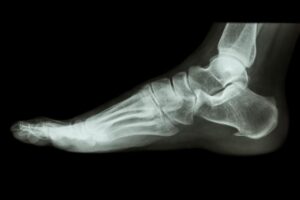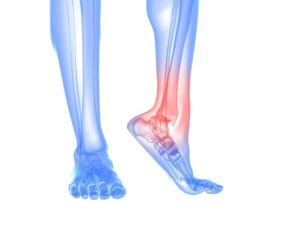Could Your Chronic Foot Pain Be a Stress Fracture?

Whatever the cause, dull, chronic foot pain can be a nuisance, making it more difficult to get around. Sometimes, foot pain goes beyond being an annoyance and can signal a more serious problem.
According to Arizona Foot Health podiatrists Ryan Golub, DPM, and Zachary Flynn, DPM, AACFAS, located in Phoenix, Arizona, chronic foot pain can sometimes mean you have a stress fracture. Understand the symptoms of a stress fracture and how you can treat it.
What is a stress fracture?
A stress fracture is different from other types of foot or ankle fractures. Unlike other fractures, it doesn’t come from sudden impact or one specific occurrence.
Instead, stress fractures develop slowly over time. They’re common in athletes and occur as a result of your foot repeatedly experiencing the same repetitive stress.
A stress fracture shows up as tiny cracks that form on your foot or ankle bones. Without treatment, the cracks continue to get larger and greater in number, causing more serious problems.
You can help prevent stress fractures by making gradual, rather than sudden, changes to your active routine and varying your activities by cross-training. Wearing supportive footwear and a healthy diet promoting strong bones also helps.
Chronic foot pain and stress fractures
Unlike other fractures, where pain comes on suddenly, stress fracture pain develops over time. You’re most likely to initially experience pain doing the activity that first caused the stress fracture or other activities that place a high-stress level on the foot.
The first symptoms can begin as dull and intermittent foot pain. With time, stress fracture pain can occur more regularly and when you’re doing a greater variety of activities.
Along with foot pain, symptoms of stress fractures include:
- Swelling
- Tenderness
- Bruising
If you have a stress fracture, symptoms like pain and swelling tend to improve when you’re not actively using the foot.
Diagnosing a stress fracture
Our team uses several tools to diagnose a stress fracture. First, we listen to your medical history and symptoms, followed by a physical examination of your foot.
We often ask you to point out the area of pain and describe when it occurs. We might also ask you about your current activities and if you’ve recently become more active or taken up a new sport.
If we suspect you might have a stress fracture, our team uses diagnostic imaging tools such as:
- X-Rays
- MRI
- Bone scan
- CT scan
The images generated from these tests show the location and severity of your stress fracture. If you have osteoporosis or another condition that puts you at risk of low bone density, we might also order a bone density scan as part of your diagnostic process.
Stress fracture treatment
The most important part of treating a stress fracture is resting, icing the area, and giving the bone time to heal. Our team might ask you to stop doing the activity that caused the injury and other activities that strain your foot.
For a more serious stress fracture, our team might prescribe a special boot or crutches to take weight completely off the area. If your stress fracture is quite severe and doesn’t respond to conservative treatment, our team can perform surgery to restore the bone.
Foot pain can indicate a stress fracture or another serious problem that needs treatment. If your foot is bothering you and not improving, contact us to make an appointment.
You Might Also Enjoy...
The Achilles Heel
Given Arizona’s climate, patients are able to remain active year round. It’s why we all chose to live here. But…
Alleviating Back Pain and Other Benefits of Custom Orthotics You Didn’t Know About
Would you ever imagine that custom foot orthotics could improve your quality of life? That’s what many people say after…
9 Helpful Tips to Prepare Your Home Before Bunion Surgery
When moderate interventions, such as wearing wider shoes or using pads in your shoes, fail to ease your bunion pain…
When Should You Go to the Doctor for an Ingrown Toenail?
In most cases, you can nurse an ingrown toenail at home with over-the-counter pain medication, topical antibiotic creams, and soaking…
6 Home Exercises to Keep Your Ankles Strong
Ankles that feel wobbly and weak are vulnerable to injury. If you play sports, run, jump, or just walk often,…
Is Surgery My Best Option For Treating Bunions?
You have a bunion and it isn’t pretty, but if your bunion is small enough, or doesn’t hurt, you may…






